(Please forgive the long post. It’s for a good reason: a local interfaith/multifaith group invited me to speak at an annual ecumenical event for interwoven faiths as part of Week Of Prayer For Christian Unity. For twenty minutes. It was my pleasure to say Yes. Here’ s the result, if you wish to read it. Enjoy!)
I’ve attended many ecumenical meetings, but this is the first time I’ve ever spoken at one. As part of my faith tradition as a Mormon, I’m used to closing sacred remarks “in the name of Jesus Christ.” Will it be OK if I do so this evening at the end? (Response: Unanimous and general Yes.)
We are always teaching. What shall we teach? With the 2014 theme of this event being “Has Christ Been Divided?” and the scripture reference of 1 Corinthians Chapter 1: verses 1 through 17, I’d like to quote verses 4 through 7:
4. I thank my God always on your behalf, for the grace of God which is given you by Jesus Christ;
5. That in every thing ye are enriched by him, in all utterance, and in all knowledge;
6. Even as the testimony of Christ was confirmed in you:
7. So that ye come behind in no gift; waiting for the coming of our Lord Jesus Christ.
This past week, Rabbi Jeremy Schneider, the spiritual leader of Temple Kol Ami in Scottsdale, Arizona, and vice president of the Greater Phoenix Board of Rabbis, toured the Mormon Temple in the nearby city of Gilbert during an open house for the new building. In the recent edition of Jewish News, he teaches us:
In last week’s Torah portion, we read about Moses learning a valuable lesson from his father-in-law, Jethro. Jethro tells Moses to appoint judges who will handle the burden of judging the people from morning until night, taking only the most difficult cases for himself. Jewish sages note that Moses learns this valuable lesson from his non-Israelite father-in-law Jethro, a Midianite.
Our tradition asks the question based on this interaction: “Who is wise?” The answer, “One who learns from ALL people” (Pirkei Avot, Chapter 4: Mishna 1).
We are always teaching. What do we teach? What do we teach about God? As part of this Week of Prayer for Christian Unity, I have thought of my own powerful moments of communion with God. When I was a child and walked in to see my parents at prayer, I remember the whoosh of feelings of safety and security but mostly of sacredness.
My favorite memory of the power of a prayerful life is one at work. I knocked on a friend’s office door; normally, he responds quickly with, “Come in!”, and I open the door. Sometimes, I’ll hear water running in the office bathroom as he makes ablution, and I know not to knock at the door for a few minutes after he returns to his office. But this day I was distracted and failed to notice that my knock at the door from without brought no invitation voiced from within. Out of habit, I called him by name, adding the customary honorific suffix, and opened the door. I found my elderly friend kneeling lowly on his prayer rug. It was such a holy moment. I felt that I had entered a bubble – a bubble of spirituality – of spirituality established by my friend, as he created a sacred space for prayer. In a familiar whoosh of feeling, I was aware that I had missed the cues of the sounds at the sink. Having cleansed himself without as he focused on cleansing himself within, he was now talking with his Maker, expressing humility without as he voiced humility within. It was just like walking in on my parents at prayer. After prayers were done, we embraced; I apologized for disturbing a sacred moment. “Oh, I don’t mind. I am just doing my duty,” he said. I replied, “It is the duty of us all.”
When I think of my favorite moments of prayer, I will always see in my mind and in my heart an elderly man from Uzbekistan, with shoes removed from off his feet, kneeling submissively on sacred ground in his office, visible to none but to Him who sees all.
I shall be telling this with a sigh
Somewhere ages and ages hence:
Two roads diverged in a wood, and I,
I took the one less traveled by,
And that has made all the difference.
-Robert Frost
In Robert M. Edsel’s book, The Monuments Men, I recently found this gem:
Children live in a closed world, and young Harry [Ettlinger] assumed life as he knew it had gone on that way forever. He didn’t have any friends who weren’t Jewish, but his parents didn’t either, so that didn’t seem unusual. [In 1930’s Germany, he] saw non-Jews at school and in the parks, and he liked them, but buried deep within those interactions was the knowledge that, for some reason, he was an outsider. He had no idea that the world was entering an economic depression, or that hard times bring recriminations and blame. Privately, Harry’s parents worried not just about the economy, but about the rising tide of nationalism and anti-Semitism. Harry noticed only that perhaps the line between himself and the larger world of [his town of] Karlsruhe was becoming easier to see and harder to cross.
⁞
In September [1938], twelve-year-old Harry and his two brothers took the train seventeen miles to Bruchsal to visit their grandparents for the last time… Opa Oppenheimer[, Harry’s grandpa,] showed them, one last time, a few select pieces from his collection of prints… His art collection contained almost two thousand prints, primarily ex libris bookplates and works by minor German Impressionists working in the late 1890s and early 1900s. One of the best was a print, made by a local artist, of the self-portrait by Rembrandt that hung in the Karlsruhe museum. The painting was a jewel of the museum’s collection… Harry had never seen it, despite living four blocks away from it his whole life. In 1933, the museum had barred entry to Jews.
⁞
A week later, on September 24, 1938, Harry Ettlinger celebrated his bar mitzvah in Karlsruhe’s magnificent Kronenstrasse Synagogue… On October 9, 1938, they arrived in New York harbor. Exactly one month later, on November 9, [was] Kristallnacht, the Night of Broken Glass… The Jewish men of Karlsruhe, including Opa Oppenheimer, were rounded up and put in the nearby Dachau internment camp. The magnificent hundred-year-old Kronenstrasse Synagogue…was burned to the ground. Harry Ettlinger was the last boy ever to have his bar mitzvah ceremony in the old synagogue of Karlsruhe.
But this story isn’t about Kronenstrasse Synagogue, the internment camp at Dachau, or even the Holocaust against the Jews… For when Private Harry Ettlinger, U.S. Army, finally returned to Karlsruhe, it wasn’t to search for his lost relatives or the remains of his community; it was to determine the fate of another aspect of his heritage stripped away by the Nazi regime: his grandfather’s beloved art collection. In the process he would discover, buried six hundred feet underground, something he had always known about but never expected to see: the Rembrandt of Karlsruhe. (Ibid, Pages 7-13.)
We are always teaching.
I was asked to share with you this evening the story of my own interfaith journey. I used to think that the work of interweaving faiths was about crossing lines, such as the lines that Harry Ettlinger saw between himself and the larger world of Karlsruhe. After years, I learned that I was wrong. Very wrong. I noticed that focusing on lines encourages designations of WE vs. THEY. So I started thinking instead about circles. Years earlier, when I was about eight years old, in our weekly family home evening, my mom had us memorize the poem Outwitted, by Edwin Markham:
He drew a circle that shut me out—
Heretic, rebel, a thing to flout.
But Love and I had the wit to win:
We drew a circle that took him in!
So I began to move beyond the Here or There of lines, or even the In or Out of circles, and instead tried to focus less on who was In and who was Out and to focus more on expanding my circle to include another. Despite a person’s flaws, for me the challenge became to see the good in them, to see what good I could find to help me be good, to help me be better.
For example, I lived in South America for a couple of years as I served a Mormon mission among the people of Argentina. I had been there just a few months, when I was straightening up the bookshelf in my room, picked up some pamphlets, and saw something flutter to the floor. I stooped to pick it up and found that it was a U.S. stamp. On it was the image of Thomas Jefferson. And I burst into tears. My immediate reaction was, “I’m starting to lose it‼” But then I started to realize why I had burst into tears. This stamp was from my homeland. It had been months since I had seen anything from home. And this was Thomas Jefferson, Founding Father, author of the Declaration of Independence in just seventeen days, who wrote the words, “All men are created equal,” who wrote, “We hold these truths to be sacred and undeniable,” which Ben Franklin changed to, “We hold these truths to be self-evident.” I think that everyone should spend a couple of years after high school in a foreign country; it can deepen one’s feelings of patriotism, even without them knowing it. It certainly did mine.
Then, as I lived among the people of Argentina, I learned to love them. I learned traditional Argentine folk songs from our local Mormon bishop, who played a wicked Latin guitar, and we’d sing with gusto like gauchos around a campfire. I learned the National Anthem and sang it with gusto at every parade and holiday. It surprised everyone around me, but my heart just wanted to join in, and not just sing, but to know the words and why they were meaningful. In spite of the day of the stamp, I began to wonder what I was going to do when I returned home and no longer could buy delicious Mantecol candy bars or drink amargo, a bitter, BITTER soft drink that I had grown to love.
At that point, I discarded the idea of circles in my interwoven faith work. I loved the people of Argentina not because they were all Mormons—They weren’t! I found that my core feelings of being an American remained at my center and indeed were strengthened. I loved extending my circle as far as it could go, only to learn that, really, I could extend it yet a little further. But the circle analogy didn’t seem to work anymore; it just didn’t seem expressive enough for what I felt. I had lived in Argentina for not yet a year, and I realized that I no longer felt like an outsider extending my circle. I was Argentine. I was American. Americans were my people, and Argentines were my people. I had developed a dual citizenship of the heart. Just as I had moved beyond the We/They of lines, I had moved beyond the concept of designating circles. I had learned that what was important for me was to develop feelings down deep. I would be happy in the United States my entire life. I now would be happy in Argentina my entire life, “perhaps until the day I die.” I had succeeded in making their lives my life.
We are always teaching. What should we teach? I suggest that we take a cue from my Muslim friend and teach about duty. We should teach about our duty to God. Anyone involved in the Boy Scouts of America, youth or adult, uses the Scout Oath to teach others “to do my duty to God and my country.” Part of our duty to God is to listen to Him, to see as God sees, to think as God thinks, to act as He would, to be a tool in His hands. The prophet Isaiah taught us:
For my thoughts are not your thoughts, neither are your ways my ways, saith the Lord.
I learned yet again to go beyond lines and circles, learning yet again the importance of feeling things down deep, when I hurried to help Felipe, whose wife and family had just died in a plane crash. I helped Arturo, his brother, as we stood and waited for hours in the heat, watching as officials opened each body bag they had carried from the helicopters to the basketball arena used as a temporary morgue, until, in the last helicopter trip of the day, the bags opened to familiar faces, and we were able to identify the bodies of their loved ones. Felipe wasn’t a Latter-day Saint; he was Catholic. I was from the United States, and he was from Colombia. He was athletic and an avid soccer player; my wife is the sportsman in our family. Despite our differences, Felipe and I bonded. Despite his being suicidal at the time, despite all the turmoil in his life that made him crawl into a shell and shut out the world, he would allow me in. This surprised me as much as it surprised his extended family, but in his darkest moments, they would come running to me repeatedly: “Come, Davy. Come quick. Felipe needs you again.” I’d hasten once more to his side—we’d sit, sometimes talk. He liked looking at pictures of my kids. But I felt that our hearts were in constant conversation, even in silence, and I could feel him taking strength from me, and I gave freely, for I knew that I had strength to spare. By connecting with those around him, with people for whom he cared deeply, he quickly learned to develop his own sources of strength.
Felipe asked me to be with him as he entered sacred ground, as he and Arturo returned to his apartment for the first time after the deaths of his wife and children. I was there when he entered the bedroom that he had shared with his wife, Amparo. Felipe just sat on the bed, and it was as if the energy just left him; he seemed like a beaten man, forsaken and alone. I looked over at the bedroom’s TV; on it, I saw a ceramic object and a stuffed toy, a plush lion cub, “Simba”, from “The Lion King.” A thought hit me to pick up the little Simba and to give it to Felipe to cuddle, which I did. Felipe pulled the toy to his barrel chest, doubled over as he sat on the edge of the bed, and just sobbed and sobbed and sobbed. My first thought was, “Oh, Dave, you blew it.” But immediately on its heels came the assurance that, no, this was exactly what Felipe needed. We stayed quiet a few minutes and let time pass; eventually, he approached me and said, “Thank you, Davy. That was perfect.” I’ll never know what that little Simba meant to Felipe and Amparo, nor do I need to know; maybe its only meaning was simply something to cuddle for the moment. Regardless, I followed an impulse when it occurred to me, and it appears it was the right thing to do. I had no need at the moment to be a tool in God’s hands, but Felipe was hurting, and God knew he was hurting and needed to heal some very deep wounds. And God trusted me to listen and to know without trying what Felipe was feeling down deep. It’s my feeling that on that day, I did my duty to God.
Interfaith experiences can even occur among people of the same faith. When I lived in another state, my congregation leaders assigned me as a home teacher (a volunteer shepherd) to a family with five young children. Jason and I had nothing in common, and our belief systems were vastly different, even though we were both LDS. For example, he held a cultural belief in the little people, such as leprechauns and fairies, and several of his tattoos bore an Irish Celtic theme, whereas my Celtic roots are Welsh, and the little people are not part of my reality. Despite his severe substance abuse concerns, this young father and I bonded easily, to the amazement of everyone in our congregation, including ourselves. I’d been visiting him for about a year, and he was working very hard to stay clean—he had recently developed a deeper desire to conquer his addictions, to really lick it this time. On one visit, we had just sat down to talk with Jason and his wife, when he interrupted, “How do you do it, Dave? How do you get us to feel these things?” After that, we opened our hearts to each other like never before, and our souls were knit together like David and Jonathan of old. It was as if we could read each other’s minds. Each time, we would plan our next visit, a week away or more often a month away, depending on what he felt he needed for support. Sometimes, in the dead of night, when the pull of drugs was strong and he was weak and needed to talk, he would just call me out of the blue and say, “Please come, Dave. I need your help. I need to stay clean.” These were some of my favorite moments. We’d sit on the stoop of his small house in the darkness, and we’d have the most amazing discussions filled with light. As we talked of truths at night (“Sweet Is the Work,” end of Verse 1), I remember many times thinking, “There is nowhere else on earth that I would rather be than right here, right now, on this stoop, talking with this man.” I could feel him taking courage from me, and I gave freely, for I knew that I had courage to spare. But I simply could not go to see him often enough, and I looked forward to each visit with all my heart. Eventually, he moved away, then I moved, and always I will miss our conversations.
We are always teaching. What do we teach? What do we teach about God? We teach that, as important as actions are, the feelings behind our actions are even more important. We teach that there is no We/They; we teach that there is no reason to expand our circle, because mankind is our circle. We teach the need to stand in holy places, to spend time there, to spend some quality time there on our knees, not just during this Week of Prayer but always, for Christian unity and for global unity. We teach that God doesn’t need just one of us, he needs all of us, and that if we work together as individual wires of communication with God, that interwoven together, we become a cable, and with cables, we may all build a bridge. And we teach that life is too short merely to go through the motions but that we must feel these things in our hearts. Each of us must feel these things down deep.
In closing, I’d like to share another of Edward Markham’s poems, this one entitled Anchored To The Infinite:
The builder who first bridged Niagra’s gorge,
Before he swung his cable, shore to shore,
Sent out across the gulf his venturing kite
Bearing a slender cord for unseen hands
To grasp upon the further cliff and draw
A greater cord, and then a greater yet;
Till at the last across the chasm swung
The cable then the mighty bridge in air!
So may we send our little timid thought
Across the void, out to God’s reaching hands—
Send out our love and faith to thread the deep—
Thought after thought until the little cord
Has greatened to a chain no chance can break,
And we are anchored to the Infinite!
We are always teaching. What shall we teach?
I say these things in the sacred name of our Savior, Jesus Christ. Amen.
Thank you for your time tonight.
(By the way, the sponsoring organization was the local Mennonite Fellowship congregation, with additional support from the Bloomington, Indiana Unit of Church Women United. My earliest years were in Eastern Ohio in the middle of Amish and Mennonite country. We spent long hours at friends’ homes with no electricity, and my pre-school was a local Mennonite Bible School. Consequently, at this Week of Prayer event, many congregation members looked so dang familiar, even though we had just met. I felt very at home, they made us feel very welcome, and I’m glad I hung around until the last dog was hung for the warm conversations afterwards. It was just plain fun making new friends of people from all sorts of backgrounds and faiths.)
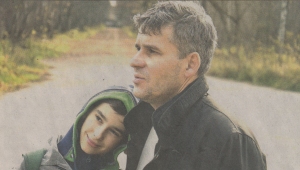
Experts say that parents modeling how to practice faith is important, but that influence can be blunted if either parent doesn’t have a close relationship with their children
——– End of Post ——–
Bonus Materials:
1. “Faith in the family: How belief passes from one generation to the next”, Article by Matthew Brown, Deseret News, Thu 26 Dec 2013
2. I Choose To Be Pure: Teens Of Diverse Faiths Speak Out On Purity And Chastity
(Or same video at lds.org link.)
3. Mormonism: A Christ-centered, Global Faith
(Or same video at lds.org link.)
4. Come With Us: Video for youth (see Moroni 10:32)
(Or same video at lds.org link.)
5. Mormon Myths and Reality
——– End of Bonus Material ——–
WebCredits—List of web resources used in this post but not explicitly credited above:
- Photo, “Christian Crosses At A Joint Service For The Week Of Prayer For Christian Unity”—en.wikipedia.org/wiki/Week_of_Prayer_for_Christian_Unity
- Photo, “Jewish Quarter, Old City, Jerusalem”—carta-jerusalem. com/biblical-sites/old-city-jerusalem/
- Photo, “Cairo, Home Interior”—Personal collection
- Photo, “Three generations of a Jewish family light a menorah”—www. deseretnews.com/article/865593024/Faith-in-the-family-How-belief-passes-from-one-generation-to-the-next.html?pg=all
- Painting, “Gauchos a caballo” (1900), Ángel Della Valle (“Gauchos on horseback”)—commons.wikimedia.org/wiki/File:%C3%81ngel_Della_Valle_-_Gauchos_a_caballo,_c._1900.jpg
- Photo, “Las Lajas Sanctuary, Ipiales, Colombia”—www. hotelclub.com/blog/beautiful-cathedrals-south-america/
- Photo, “Panorama Of Las Lajas Sanctuary, Ipiales, Colombia”—www. hotelclub.com/blog/beautiful-cathedrals-south-america/
- Photo, “Accra Ghana LDS Temple Grounds”—www. mormonnewsroom.org/article/mormonism-in-pictures-beauty-purpose-mormon-temples?cid=HPWE103013152
- Photo, “Experts say that parents modeling how to practice faith is important, but that influence can be blunted if either parent doesn’t have a close relationship with their children”—www. deseretnews.com/article/865593024/Faith-in-the-family-How-belief-passes-from-one-generation-to-the-next.html?pg=all (NOTE: This image is not in the online version but only in the print version, Page P7.)
- Photo, “Interwoven Faiths”—www. isna.net/. The Islamic Society of North America (ISNA) is an independent, open and transparent membership organization that strives to be an exemplary and unifying Islamic organization in North America by contributing to the betterment of the Muslim community and society at large. ISNA is committed to freedom, to eradicating prejudice and to creating a society where Muslims can live peacefully and prosper alongside other Americans from all walks of life and diverse traditions and faith. Everyone is helpful, warm and gracious, and Dave loves visiting there.
——– End of WebCredits ——–
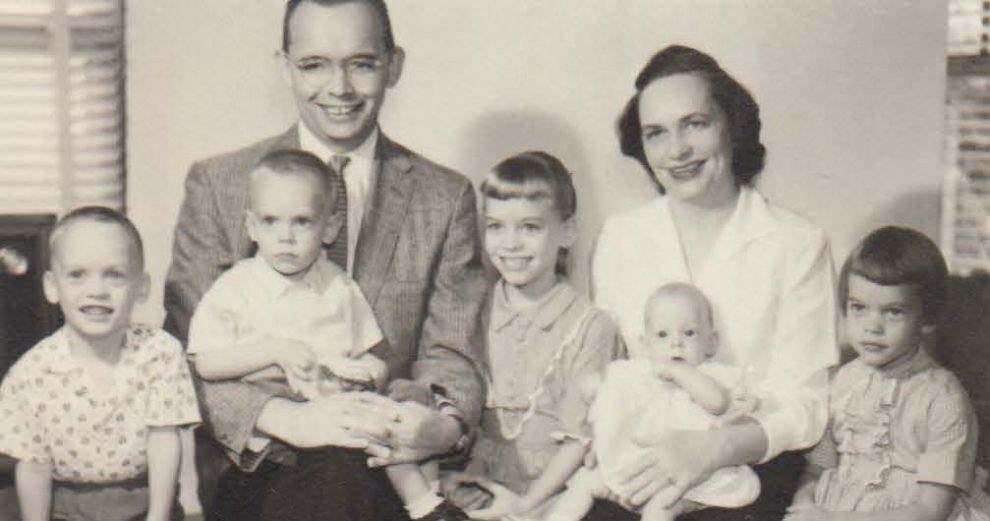

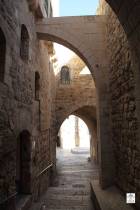



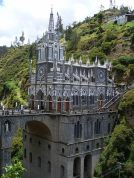
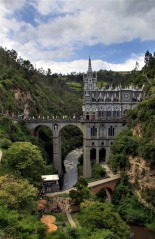








Dave — I am breathless after reading this. Your lecture/talk/essay is brilliant and beautiful. I would expect no less from you, but I am humbled and inspired nonetheless. Wonderful blog. Wonderful work that you and your family are accomplishing. Thanks.
LikeLike
Thanks, Linda. Glad you like it!
LikeLike
Pingback: Test Post – Align | Test Site